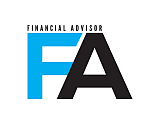
How Ivy League Endowments Performed in Fiscal 2018
“This year’s gains were driven by alternative investment strategies. Ivy League asset managers have been ramping up allocations to alternative asset classes in recent years in hopes of outperforming broad market indexes. “What we definitely see is that the funds that were highly exposed to private equity and venture capital did very well,” said Jeff Schwartz, president at MPI.” Read the full article here.





